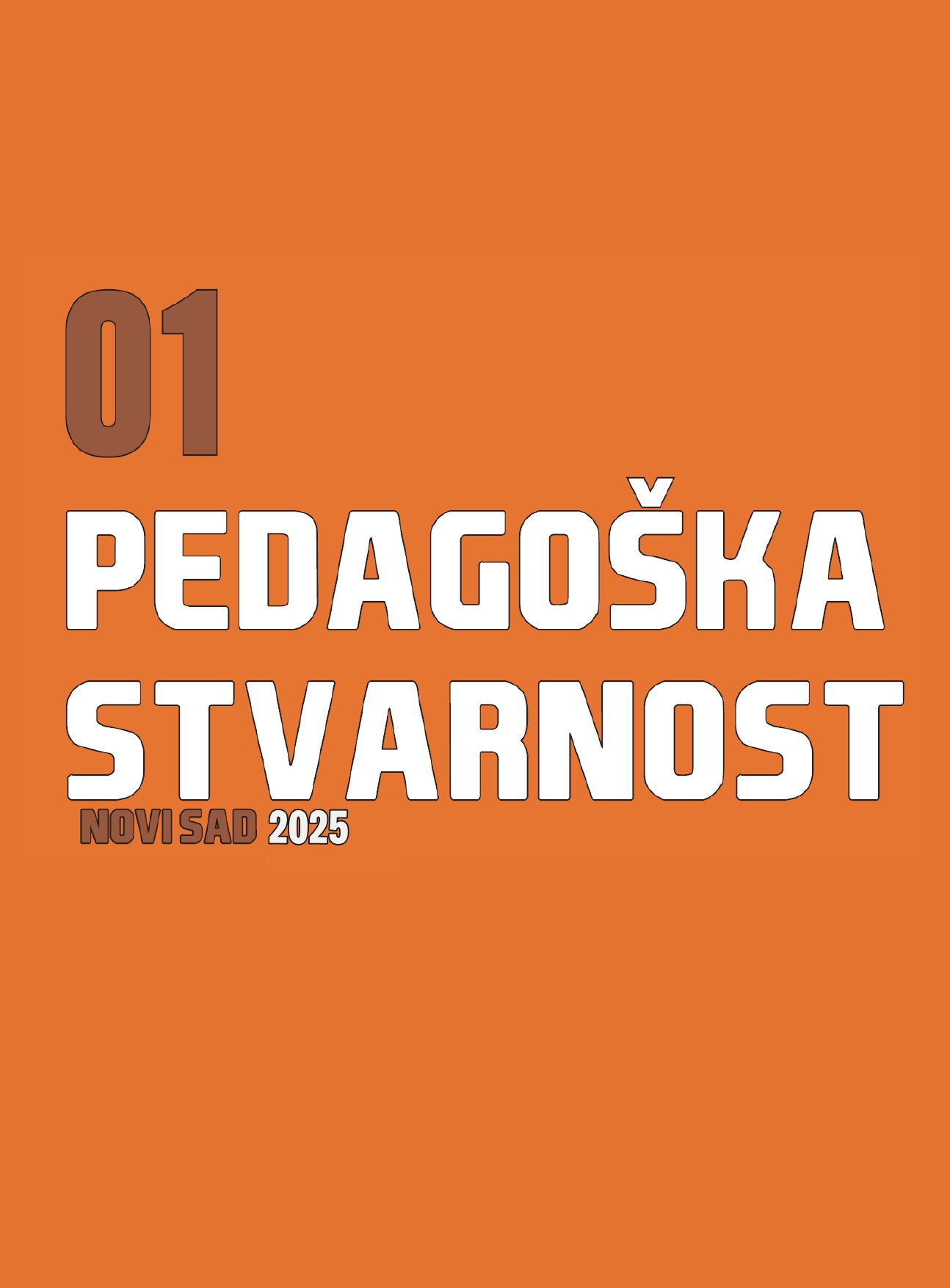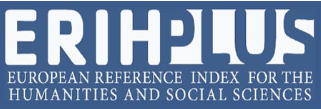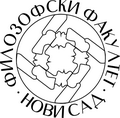FAKTORSKA STRUKTURA SKALE AUTONOMIJE NASTAVNIKA OSNOVNIH ŠKOLA
Originalni naučni rad
Apstrakt
Autonomija nastavnika podrazumijeva njihovu potrebu da djeluju u skladu sa svojim integritetom i ključna je u pogledu efikasnosti škole. S tim u vezi cilj našeg istraživanja je bio da se utvrdi faktorska struktura skale nastavničke autonomije. Istraživački instrument – TAS skala je preuzeta uz manje korekcije i sprovedena na uzorku 268 nastavnika osnovnih škola (razredna i predmetna nastava), 2024. godine. U svrhu utvrđivanja faktorske strukture skalera izračunate su mjere deskriptivne statistike, KMO i Bartlerov test, nivo komunaliteta svake promjenljive, Katelov test odrona, matrica komponenti, rotirajuća matrica komponenti i matrica transformacije komponenti. Izdvojena su tri faktora: 1. Autonomija za kreativnost u nastavi i alternativne pristupe u nastavi, 2. Autonomija u odnosu na kurikulum i 3. Opšta nastavnička autonomija. Rezultati istraživanja ukazuju da se TAS skala na uzorku nastavnika banjalučkih osnovnih škola može koristiti samo za mjerenje ajtema prvog faktora - procjena nastavničke autonomije za kreativnost u nastavi i alternativne pristupe u nastavi (α = 0.793). Preostala dva faktora imaju nizak nivo relijabilnosti. Na osnovu dobijenih rezultata prijedlog je da se istraživanja ovog konstrukta usmjere među nastavnicima srednjih škola i fakulteta. Ajtemi drugog i trećeg faktora mogu poslužiti za revidiranje instrumenta i nova istraživanja u okviru nastavničke autonomije.
Reference
Baard, P. P., Deci, E. L. & Ryan, R. M. (2004). Intrinsic need satisfaction: A motivational basis of performance and well-being in two work settings. Journal of Applied Social Psychology, Vol. 34, No. 10, 2045–2068. https://doi.org/10.1111/j.1559-1816.2004.tb02690.x
Bartlett, M. S. (1954). A Note on the Multiplying Factors for Various Chi Square Approximations. Journal of the Royal Statistical Society, 16, 296–298.
Belias, D., Kousteliosb, A., Sdroliasc, L., Aspridis, G. (2015). Job Satisfaction, Role Conflict and Autonomy of employees in the Greek Banking Organization. Procedia - Social and Behavioral Sciences 175, 324–333. https://pdf.sciencedirectassets.com/277811/1-s2.0-S1877042815X00103/1-s2.0-S1877042815012677/main.pdf?
Breaugh, J. A. (1985). The measurement of work autonomy. Human relations, 38(6), 551–570. doi: 10.1177/001872678503800604
Caprara, G. V., Barbaranelli, C., Steca, P., & Malone, P. S. (2006). Teachers’ Self-Efficacy Beliefs as Determinants of Job Satisfaction and Students’ Academic Achievement: A Study at the School Level. Journal of School Psychology, 44, 473–490. https://doi.org/10.1016/j.jsp.2006.09.001
Collie, R. J., Shapka, J. D., Perry, N. E., & Martin, A. J. (2016). Teachers’ psychological functioning in the workplace: Exploring the roles of contextual beliefs, need satisfaction, and personal characteristics. Journal of Educational Psychology, 108(6), 788–799. https://psycnet.apa.org/doi/10.1037/edu000008
Çolak, İ., & Altınkurt, Y. (2017). Okul iklimi ile öğretmenlerin özerklik davranışları arasındaki ilişki [The relationship between school climate and teacher autonomy behaviors]. Kuram ve Uygulamada Eğitim Yönetimi [Educational Administration: Theory and Practice], 23(1), 33–71. https://doi.org/10.14527/kuey.2017.002.
Çolak, İ., Altınkurt, Y., & Yılmaz, K. (2017). The relationship between teachers' autonomy behaviors and job satisfaction. The Black Sea Journal of Social Sciences, 9(2), 189–208. https://dergipark.org.tr/tr/download/article-file/410551
Cribb, A., & Gewirtz, S. (2007). Unpacking autonomy and control in education: some conceptual and normative groundwork for a comparative analysis. European Educational Research Journal, 6(3), 203–213.
https://journals.sagepub.com/doi/pdf/10.2304/eerj.2007.6.3.203
Cronbach, L. J. (1951). Coefficient alpha and the internal structure of tests. Psychometrika, 16, 297–334. https://doi.org/10.1007/BF02310555
Deci, E. L., & Ryan, R. M. (2000). The" what" and" why" of goal pursuits: Human needs and the self-determination of behavior. Psychological inquiry, 11(4), 227–268. https://www.tandfonline.com/doi/abs/10.1207/S15327965PLI1104_01
Dilekçi, Ü. (2022). Teacher Autonomy as a Predictor of Job Satisfaction. Bartın University Journal of Faculty of Education, 11(2), 328–337. https://files.eric.ed.gov/fulltext/ED619544.pdf
Dincer, A. (2019). Language teacher autonomy in Turkish EFL context: Relations with teachers' autonomy and job satisfaction levels. I-manager’s Journal on English Language Teaching, 9(2), 11–25.
https://www.researchgate.net/publication/334088408_Language_teacher_autonomy_in_Turkish_EFL_
context_Relations_with_teachers'_autonomy_and_job_satisfaction_levels
Đorđić, V. i Tubić, T. (2010). Teorija samoodređenja i razumevanje motivacije učenika u nastavi fizičkog vaspitanja. Zbornik Instituta za pedagoška istraživanja, God. 42, Br. 1, 128–149. https//www.researchgate.net/publication/321109898
Ertürk, R. (2021). The relationship between school administrators' supportive behaviors and teachers' job satisfaction and subjective well-being. International Journal of Contemporary Educational Research, 8(4), 184–195. https://ijcer.net/index.php/pub/article/view/215/179
Ertürk, R. (2023). The Effect of Teacher Autonomy on Teachers' Professional Dedication. International Journal of Psychology and Educational Studies, 10(2), 494–507. https://www.researchgate.net/publication/370460481
Evers, A. T., Verboon, P. and Klaeijsen, A. (2017). The development and validation of a scale measuring teacher autonomous behaviour. British Educational Research Journal, 43(4), 805‒821.
Fernet, C., Austin, S., Trépanier S. G. & Dussaul, M. (2012). How do job characteristics contribute to burnout? Exploring the distinct mediating roles of perceived autonomy, competence, and relatedness. European Journal of Work and Organizational Psychology, 22(2), 123–137. http://dx.doi.org/10.1080/1359432X.2011.632161
Field, A. (2000). Discovering statistics using SPSS for windows. Thousand Oaks. Sage Publications Ltd.
Field, A. (2009). Discovering Statistics Using SPSS. 3rd Edition. Sage Publications Ltd.
Friedman, I. A. (1999). Teacher-perceived work autonomy: The concept and ıts measurement. Educational and Psychological Measurement, 59(1), 58–76.
Hull, C. L. (1943). Principles of behavior: An introduction to behavior theory. New York: Appleton-Century-Crofts. https://doi.org/10.1177/0013164499591005
Johnston, M. M., & Finney, S. J. (2010). Measuring basic needs satisfaction: Evaluating previous research and conducting new psychometric evaluations of the Basic Needs Satisfaction in General Scale. Contemporary
educational psychology, 35(4), 280–296. https://selfdeterminationtheory.org/
wpcontent/uploads/2014/04/2010_JohnstonFinney_CEP.pdf
Kaiser, H. F. (1970). A second generation little jiffy. Psychometrika, 35, 401–415. http://dx.doi.org/10.1007/BF02291817
Kaiser, H. F. (1974). An index of factorial simplicity. Psychometrika, 39, 31–36. http://dx.doi.org/10.1007/BF02291575
Kılınç, A. Ç., Bozkurt, E., & İlhan, H. (2018). Examining teachers’ opinions on teacher authonomy. Journal of Education and Humanities: Theory and Practice, 9(18), 77-98. https://dergipark.org.tr/tr/download/article-file/672451
Lalić-Vučetić, N., Đerić, I. i Đević, R. (2009). Učenička autonomija i interpersonalni stil nastavnika u teoriji samodeterminacije. Zbornik Instituta za pedagoška istraživanja, God. 41, Br. 2, 349–366.
Lennert da Silva, A. L., & Mølstad, C. E. (2020). Teacher autonomy and teacher agency: A comparative study in Brazilian and Norwegian lower secondary education. The Curriculum Journal, 31(1), 115–131. https://bera-journals.onlinelibrary.wiley.com/doi/pdf/10.1002/curj.3
Leite, C., Fernandes, P., & Figueiredo, C. (2019). National curriculum vs curricular contextualisations: Teachers’ perspectives. Educational Studies, 46(2), 1–14. https://doi.org/10.1080/03055698.2019.1570083.
Limon, İ., & Aydın, B. (2020). School principals' opinions on autonomy in school administration. Sakarya University Journal of Education, 10(3), 459-484. https://doi.org/10.19126/suje.648585
Lopes, J., & Oliveira, C. (2020). Teacher and school determinants of teacher job satisfaction: A multilevel analysis. School Effectiveness and School Improvement, 31(4), 641–659. https://doi.org/10.1080/09243453.2020.1764593
Machin, S. & Vernoit, J. (2011). Changing School Autonomy: Academy Schools and Their Introduction to England's Education. London: Centre for the Economics of Education-https://www.researchgate.net/publication/239806056_
Malčić, B., Marić Jurišin, S. i Tančić, N. (2023). Factor Structure of the Teacher Autonomy Scale. Иновације у настави, 36(3), 71–84. https://scindeks-clanci.ceon.rs/data/pdf/0352-2334/2023/0352-23342303071M.pdf
Marić Jurišin, S. i Malčić, B. (2022). Samoprocjena nastavničke profesije u savremenom obrazovnom kontekstu. Novi Sad: Filozofski fakultet Novi Sad.
Marshall, P. A. (2019). Teacher Autonomy on English Communication Courses in Japanese Universities. International Journal of Curriculum and Instruction, 11(2), 87‒99.
Maslow, A. H. (1970). Motivation and personality (2nd ed.). New York: Harpers and Row.
McClelland, D. C. (1965). Toward a theory of motive acquisition. American Psychologist, 20, 321–333. https://psycnet.apa.org/doiLanding?doi=10.1037%2Fh0022225
Mohd Arof, K. Z., Ismail, S., & Saleh, A. L. (2018). Contractor’s Performance Appraisal System in the Malaysian Construction Industry: Current Practice, Perception and Understanding. International Journal of Engineering & Technology, 7(3.9), 46–51. http://dx.doi.org/10.14419/ijet.v7i3.9.15272
Murray, H. A. (1938). Explorations in personality. New York: Oxford University Press.
Osnovno obrazovanje / Primary Education 2023/2024 (2024). Статистички билтен. Републички завод за статистику Бања Лука. https://www.rzs.rs.ba/static/
uploads/bilteni/obrazovanje/osnovno_obrazovanje/
Bilten_Osnovno_Obrazovanje_2023_2024_WEB.pdf
Parker, G. (2015). Teachers’ Autonomy. Research in Education. 93(1), 19–33. https://journals.sagepub.com/doi/10.7227/RIE.0008
Pearson, L. C., & Hall, B. W. (1993). Initial construct validation of the teaching autonomy scale. The Journal of Educational Research, 86(3), 172-178. https://doi.org/10.1080/00220671.1993.9941155
Pearson, L. C & Moomaw, W. (2005). The Relationship between Teacher Autonomy and Stress, Work Satisfaction, Empowerment, and Professionalism. Educational Research Quarterly, 29(1), 38-54. https://files.eric.ed.gov/fulltext/EJ718115.pdf
Pearson, L. C. and Moomaw, W. (2006). Continuing validation of the teaching autonomy scale. The Journal of Educational Research, 100(1), 44‒51.
Piza, C., Zwager, A., Ruzzante, M., Dantas, R., & Loureiro, A. (2020). Supporting teacher autonomy to improve education outcomes [Policy Research Working Paper 9371]. World Bank.
Ramos, R.C. (2006). Considerations on the role of teacher autonomy. Colombian Applied Linguistics Journal, 183-202. https://www.researchgate.net/publication/318880176_
Considerations_on_the_role_of_teacher_autonomy
Ryan, R. M. & Deci, E. L. (2000). Self-determination theory and the facilitation of intrinsic motivation, social development, and well-being. American Psychologist, Vol. 55, 68–78. https://psycnet.apa.org/doiLanding?doi=10.1037%2F0003-066X.55.1.68
Skaalvik, E. M., & Skaalvik, S. (2014). Teacher self-efficacy and perceived autonomy: Relations with teacher engagement, job satisfaction, and emotional exhaustion. Psychological Reports, 114(1), 68–77. https://doi.org/10.2466/14.02.PR0.114k14w
Skerritt, C. (2019). Irish migrant teachers' experiences and perceptions of autonomy and accountability in the English education system. Research Papers in Education, 34(5), 569–596.
Tabachnick, B. G., & Fidell, L. S. (2014). Using multivariate statistics. Pearson Education.
Tavakol, M., Dennick, R. (2011). Making sense of Cronbach’s alpha. International Journal of Medical Education, 2, 53–55.
Vallerand, R.J. (2000). Deci and Ryan's self-determination theory: A view from the hierarchical model of intrinsic and extrinsic motivation. Psychological Inquiry, 11(4), 312–318. https://www.researchgate.net/publication/284515746
Vangrieken, K., Dochy, F., Raes, E. & Kyn, E. (2015). Teacher collaboration: A systematic review. Educational Research Review, 15, 17–40. https://www.sciencedirect.com/science/article/abs/pii/S1747938X1500024X?via%3Dihub
Varatharaj, R., Abdullah, A. G. K. and Ismail, A. (2015). The effect of teacher autonomy on assessment practices among Malaysian cluster school teachers. International Journal of Asian Social Science, 5(1), 31‒36.
Worth, Ј., & Van den Brande, Ј. (2020). Teacher Autonomy: How Does It Relate to Job Satisfaction and Retention? National Foundation for Educational Research,. https://files.eric.ed.gov/fulltext/ED604418.pdf
Zembylas, M. and Papanastasiou, E. (2004) Job Satisfaction among School Teachers in Cyprus. Journal of Educational Administration, 42, 357–374.
http://dx.doi.org/10.1108/09578230410534676







